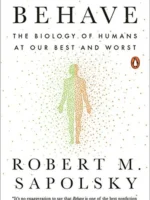Campbell Biology Review
Campbell Biology is the standard introductory biology text: concept-first explanations, strong visuals, and experimental grounding from molecules to ecosystems. It scaffolds core principles while emphasizing how we know what we know.
Overview
Modules: chemistry of life, cell structure and function, genetics and information flow, evolution and diversity, plant and animal form and function, ecology. Figures tie mechanisms to experiments and real-world applications.
Summary
Each chapter frames big ideas (structure–function, energy and matter, information flow, systems interactions), then anchors them in experiments, data interpretation, and problem sets. Evolution threads through all sections, connecting molecular mechanisms to population change and biodiversity.
Authors
Reece, Urry, Cain, Wasserman, Minorsky, and Jackson curate a broad team; pedagogy is consistent and assessment-friendly.
Key Themes
Evolution as unifier; structure enabling function; regulation and feedback; quantitative reasoning in biology.
Strengths and Weaknesses
Strengths: clarity, visuals, and integration of experiments with practice questions. Weaknesses: breadth over depth; advanced topics require specialized texts.
Target Audience
University intro courses, AP/IB students, and self-learners who want a coherent, data-aware primer.
Favorite Ideas
Figure walk-throughs that teach how to read data; concept check questions that build retrieval practice.
Takeaways
Master the core themes and you can navigate any subfield. Campbell is a map of biology’s logic, not just its vocabulary.




